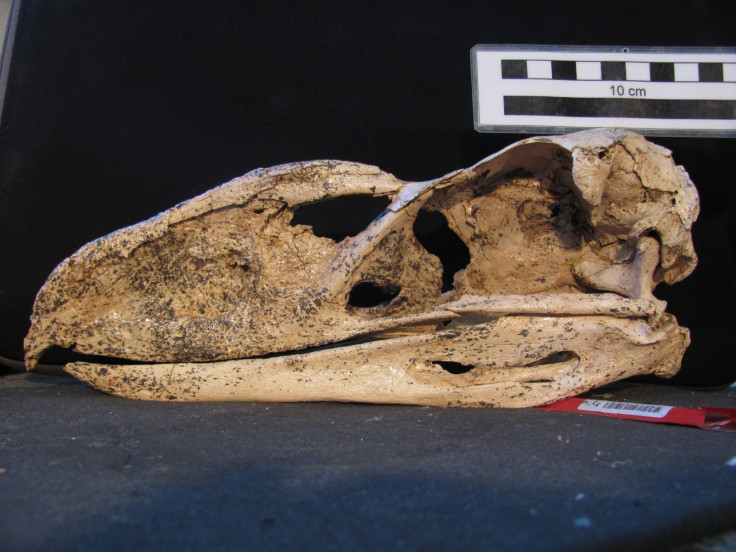Predatory terror bird species had low voice and listened for footsteps of prey
A new species of terror bird has been discovered, with the creature standing at 4ft tall and living in Argentina 3.5 million years ago.
Scientists said it is the most complete terror bird fossil ever discovered, with over 90% of the skeleton preserved, meaning it can shed light on the predatory group of birds.
Terror birds lived during the Cenozoic Age (about 65 million years ago) in South America. While the latest species was fairly small, other types have been known to grow up to 10ft in height. They were flightless birds with tall hooked beaks and were the predominant predator at the time.
Publishing their findings in the Journal of Vertebrate Palaeontology, scientists said the specimen has revealed new details of anatomy that are rarely preserved in the fossil record – including the auditory region of the skull, the voice box, trachea, eye bones and palate.

This allowed the scientists to build an unprecedented understanding of the sensory capabilities of terror birds, helping to explain behaviour and ecology of this group of extinct birds.
One of the findings showed the species, which has been called Llallawavis scagliai, would have could hear very low frequency sounds compared with other birds. They also found it communicated with low-frequency noises, suggesting it hunted its prey by listening out for footsteps.
The authors wrote: "Our estimations of hearing sensitivity in Cariamiformes places Llallawavis below the average for living species. Because the vocalisation range of most birds falls within the lower half of their hearing sensitivity range, Llallawavis may have had a narrow, low vocalisation frequency range ... At the lower frequency end of the range of hearing, the ear becomes less sensitive to soft sounds. It seems plausible to hypotheisise that Llallawavis had enhanced acoustic abilities at lower frequency registers."

Federico "Dino" Degrange, lead author of the study, said: "The mean hearing estimated for this terror bird was below the average for living birds. This seems to indicate that Llallawavis may have had a narrow, low vocalisation frequency range, presumably used for intraspecific acoustic communication or prey detection."
Researchers say the find will provide a greater insight into better understanding of the diversity of terror birds. Degrange said: "The discovery of this species reveals that terror birds were more diverse in the Pliocene than previously thought. It will allow us to review the hypothesis about the decline and extinction of this fascinating group of birds."
© Copyright IBTimes 2024. All rights reserved.






















